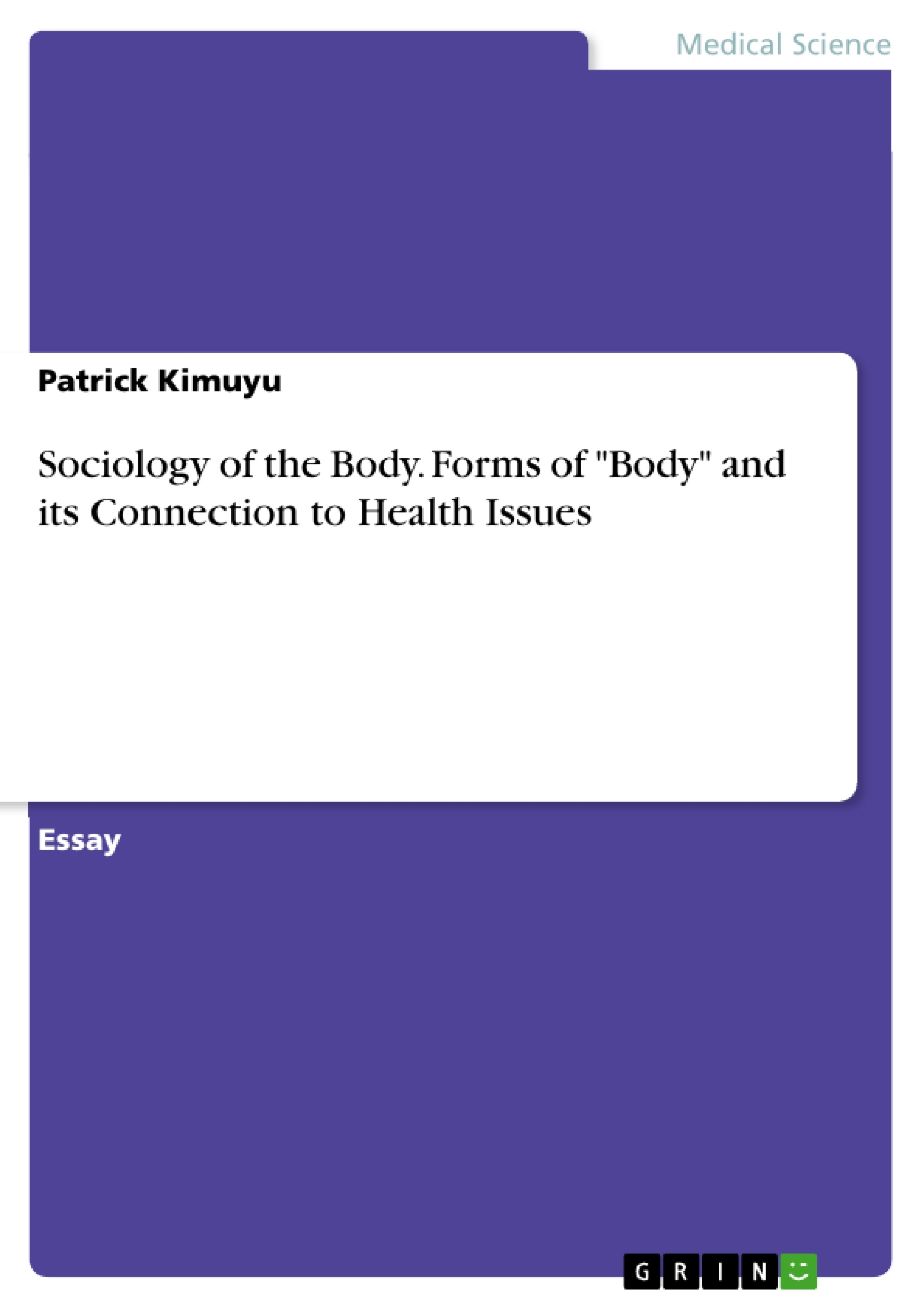This research paper will give a comprehensive overview on the core elements of the Sociology of the Body. It will digress into the principal tenets of the discipline and discuss how the human body has been theorized to address different roles. It will also discuss the role of the body in symbolic interaction and the sociology of health.
Since its inception, sociology has been changing to assume diverse forms. In recent years, Sociology of the Body emerged as one of the fundamental branches of Sociology. Historically, Sociology was viewed on cultural and societal perspectives, and the body was considered as a peripheral element in the discipline.
In Sociology of the Body, the body is considered as an interplay of multiple manifestations, identities, hierarchies and relations and, Kelland remarks, “that interplay results in an individual’s unique way of knowing, their personal epistemology”.
Table of Contents
- Introduction
- Theorizing Bodies
- The Physical Body
- The Personal Body
- The Expressive Body
- The Knowledgeable Body
- The Political Body
- The Body in Symbolic Interaction
- Body as Performance: The Dramaturgical Body
- Reflexivity as Embodiment: The Looking-Glass Body
- Body as Province of Meaning: The Phenomenological Body
- Body as Story: The Narrative Body
- Body as Trace of Culture: The Socio-Semiotic Body
- Sociology of Health, Illness and Sexuality
- Conclusion
Objectives and Key Themes
This research paper provides a comprehensive overview of the Sociology of the Body, exploring its core elements, principal tenets, and how the human body has been theorized to address different roles. It also delves into the body's role in symbolic interaction and the sociology of health.
- Theorization of the Body as a multifaceted concept, encompassing physical, personal, expressive, knowledgeable, and political aspects
- The body's role in knowledge acquisition, experience, and interaction with the environment
- The body's significance in shaping personal identity, communication, and embodiment of knowledge
- The influence of culture, power, and technology on the body's political dimensions
- The body as a central component in symbolic interaction, including its performance, narration, embodiment, and interpretation of expressions
Chapter Summaries
- Introduction: This chapter introduces the emergence of sociology as a discipline and its evolution, particularly focusing on the recent development of Sociology of the Body. It highlights the historical neglect of the body in sociology and emphasizes its importance in shaping social lives and self-identity.
- Theorizing Bodies: This chapter presents different theoretical perspectives on the body, exploring its various manifestations and roles in society. It delves into the concepts of the physical body, personal body, expressive body, knowledgeable body, and political body, outlining how these theoretical frameworks contribute to understanding the body's social significance.
- The Physical Body: This chapter focuses on the physical body from a phenomenological perspective, discussing its biological components and their interaction with the environment. It highlights the body's role in acquiring knowledge through sensory experiences and its function as an interface between internal and external environments.
- The Personal Body: This chapter explores the concept of the personal body, emphasizing its role in defining individual identity and individuality. It discusses how physical boundaries and societal influences shape the perception of the body and its limitations.
- The Expressive Body: This chapter examines the expressive function of the body, highlighting its significance in communication and interpersonal interaction. It explores the role of the body in expressing emotions, facilitating physical contact, and enabling self-expression.
- The Knowledgeable Body: This chapter delves into the body as a repository of knowledge and skills. It explains how knowledge is stored and transformed into skills through physical activities and tacit understanding.
- The Political Body: This chapter explores the political implications of the body, discussing how cultural, gender, and racial inscription shape individual identity and power dynamics. It highlights the role of technologies in shaping the body as a map of power and identity.
- The Body in Symbolic Interaction: This chapter examines the body's role in symbolic interaction, viewing it as both a subject and an object. It discusses the body's significance in performance, narration, embodiment, and the interpretation of expressions. It also highlights the body's function as a trace of culture.
- Body as Performance: The Dramaturgical Body: This chapter focuses on the dramaturgical body, emphasizing the role of human agency in social and cultural rituals. It explores how rituals shape experiences of embodiment and how the body becomes a significant element in performance.
Keywords
This research paper focuses on the Sociology of the Body, exploring key concepts such as embodied experiences, symbolic interaction, phenomenology, physical body, personal body, expressive body, knowledgeable body, political body, dramaturgical body, and the body as a trace of culture.
- Quote paper
- Patrick Kimuyu (Author), 2018, Sociology of the Body. Forms of "Body" and its Connection to Health Issues, Munich, GRIN Verlag, https://www.grin.com/document/428608



